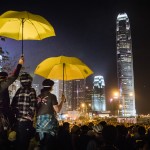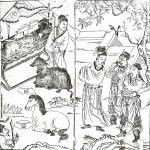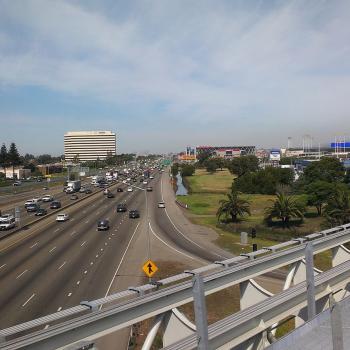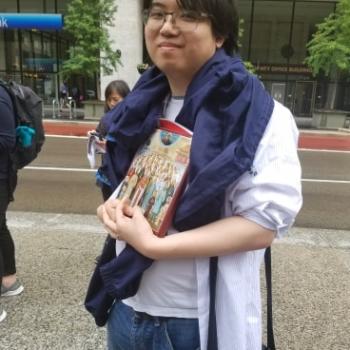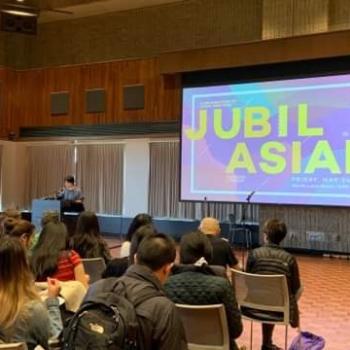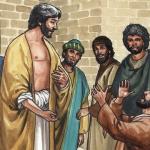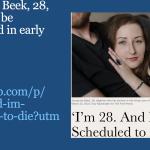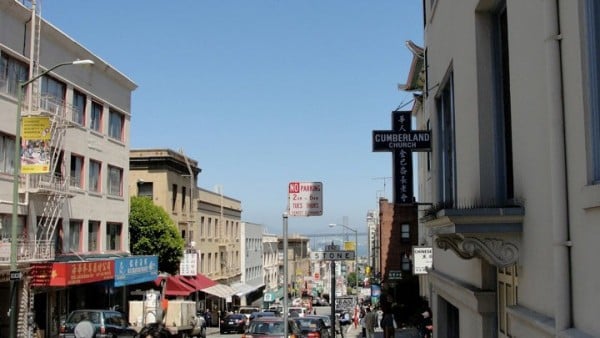
I remember the first time I crossed the Tsing Ma Bridge from Lantau Island. I had this feeling that I had been here – Hong Kong – before, but I hadn’t. All my life, I had grown up on the West Coast, first in the San Francisco Bay Area, then in Metro Vancouver. It wasn’t until I was 24 that I took my first trip to Asia.
The problem is that I should have felt like a foreigner, but I did not. I had a feeling that I had been here before, and that feeling grew the longer I stayed. People here spoke Cantonese, the language that I had had to speak at home when I was a kid. Food here was not ‘Chinese food’ or ‘Cantonese food’ – it was just food, the stuff that normal people eat: roast goose (not duck), barbecue pork, congee, morning dim sum at special discounts, baked rice and ovaltine at any of the fast food chains.
When some of my friends from North America go to Hong Kong, they tell me that they don’t have a feeling of belonging because everybody looks at them because they’re not really Chinese. I even have a co-authored peer-reviewed article out about this. I didn’t have a feeling one way or another – most people spoke to me in Cantonese, and when I stumbled, they seemed pretty nice about it. My relatives were especially kind to me; I had never met them before, but they not only treated me like family, but also regaled me with stories about our family in Hong Kong and expected me to do the same in Cantonese – which I did.
I wouldn’t say that I immediately felt at home in Hong Kong; the truth is that going there after fantasizing about it for so long was pretty anti-climactic. People there were just normal. They ate normal food, dressed normally, talked normally, reasoned normally, had normal lives, and told normal stories.
But I am not from Hong Kong, and sometimes I have been puzzled about why I felt so normal there, or bothered to connect enough to have so much feeling about the Umbrella Movement a few years after I first went there that I ended up becoming Eastern Catholic.
One friend that I once took to San Francisco’s Chinatown described it as ‘just like Hong Kong.’ She had grown up in Hong Kong, whereas at the time she said it, I had never been there. It sounded far-fetched at the time, but maybe there is something to the idea that I felt like Hong Kong was normal because I was so used to Chinatown.
The problem is that I am not from Chinatown either. I remember my first time going on a school field trip to Chinatown. My kindergarten teacher, a white lady from the suburb of Fremont, told us that we were going to visit the fortune cookie factory and a Buddhist temple. She instructed us very strictly not to ask too many questions about God at the Buddhist temple. We were, after all, from a Christian school – a Pentecostal one (Assemblies of God, to be exact) – and we were going to have our first interfaith experience at the ripe old age of five, and we were not going to screw it up. This was pretty funny now that I think about it, because we had several different kinds of Buddhists in that class and we could have asked them our questions. I’m glad to report that the trip went off without a hitch.
My dad got the idea from that trip that it would be a good idea to bring me to Chinatown whenever he had time so that we could have some father-son bonding time. Going with my dad to Chinatown was pretty cool as a kid. We wouldn’t just go into the little souvenir shops; my dad is a trained Hung Kuen master with a lineage that can be traced up to Wong Fei Hung (he is Lam Sai-wing’s student’s student, which means that I too can claim an impeccable Hung Kuen lineage, as I still remember some moves from ‘Taming the Tiger Fist 工字伏虎拳’), so we got to play with knives too. One time, there was a street circus, and because they identified me as the cute kid who could be a volunteer, they brought me up to their cart and started spinning bowls on my head.
But going to Chinatown meant that I wasn’t from Chinatown. This became very apparent when I was fourteen. Our family had been living in the United States for fourteen years on a green card; I had seen that the card said ‘Resident Alien,’ and had asked my mom what planet we were from – she said, Canada. Because of the higher possibility of getting college scholarships as citizens, we decided to naturalize, and to do that, we had a broker in Chinatown. My mom and I took Bay Area Rapid Transit (BART) to get out to Montgomery Station, and we got so lost trying to navigate from the Financial District to Chinatown. There was some suburban fear involved too, as we thought every other person looked like some dangerous criminal who was out to mug us. I suspect this is how some of my students from Northwestern now feel about going into Chicago proper.
The truth is that I am from Fremont, from a neighborhood called Ardenwood where the streets are all named after Shakespeare characters. You could say that Fremont was pretty ‘Asian,’ but it’s not nearly as romantic as the religion scholar Diana Eck makes it out to be in her documentary Fremont, USA either. I went to school with a bunch of Mexican, Filipino, Chinese, Korean, and Japanese kids, and the white kids tried to fit in by claiming to be a quarter of something and a half of something else and an eighth of the other thing too. My best friend at the Christian school was an Irish Catholic kid who had really dark humor but was cool enough to start a detective club with me; it’s too bad he got into drugs. There was also this other Filipino kid who told me that he had learned about the book of Tobit in catechism class, and I got really scared for his salvation because he was adding books to the Bible, which Revelations with an ‘s’ says that you shouldn’t do or else you’ll go to hell. My first crush, which everybody told me about (so it must have been true, despite the cooties), was on a Chinese girl who did this dance with a bunch of ribbons; I thought it was really cool because she looked like she was straight out of a Wong Fei Hung movie.
You could say that I’m from Hayward too: I went to church there as a kid and then later ended up going to Catholic school there too. My dad was the Cantonese pastor in a mostly Mandarin-speaking church in a pretty slummy area of Hayward, although I found out later on that my Mexican friend from band at the Christian school also lived there, so suddenly the neighborhood became cool too. Maybe you can say that that’s where I learned to be Chinese, although the biggest impression I have of the Chinese school there is the first-grade teacher slamming her fists onto the table in frustration at the textbook’s declaration that ‘we are Chinese nationals 我們是中國人.’ No, she screamed, we are Taiwanese 我們是台灣人! I guess that was cool, except I wasn’t Taiwanese either, and this was before Taiwanese food (like Korean food) became cool.
I think along the way, someone must have told us that what we were experiencing was called the melting pot. To this day, I am not sure what was being melted or what the pot was. In fact, I am relatively unconvinced about my own assimilation. To this day, I still speak Cantonese because my mom made us speak it at home, and I am not terrible at Mandarin because the uncles and aunties at church spoke it to us. I still think of Cantonese food – butcher meat, sautéed vegetables, pork-based broth – as just normal food. I can still recite the Ballad of Mulan 木蘭詩 in Cantonese, and I know enough hero stories to get by, including the modern Jin Yong wuxia novels 金庸武俠小說, mostly between my grandpa reading to me parts of Journey to the West 西遊記, me reading the Three Kingdoms 三國演義, and me watching The Legend of the Condor Heroes射鵰英雄傳 and Justice Pao 包公 on TV. I even married a Cantonese woman who knows all of what I’m talking about.
I say all this because the way the world tends to operate is to slot people into the nations where they are supposed to belong. This is not just something that I have to say on July 4 when a few rich white men declared the United States to be a new (white) nation; if anything, I should have said it on Canada Day when a few rich white men confederated Canada as a new (white) nation (but I blogged about St John of Shanghai instead). It’s not an American problem, or a Canadian problem, or even a white people problem – it is, I’d say, the state of our modern world.
Early on in the first year of my undergraduate studies at the University of British Columbia, I heard a lecture from an anthropologist Greg Feldman that made what seems to be a lasting impact on me. I was part of a first-year program called Arts Foundations, and he came into the room, struck a pose, and proclaimed that he was here to shake the foundations. He said that when he was growing up, his favorite magazine was National Geographic. Bored in college, he discovered that there were these people called anthropologists who did the adventurous things that he had read about in National Geographic, and that’s what made him sign up to be a major. But after getting a PhD in Anthropology and working in a geography department for quite some time, he told us that what needed to be challenged was the ‘National Geographic view of the world,’ an earth that is naturally carved up into nations where people who have a common heritage are governed by a state that reflects their commonality – this is called the nation-state.
I enjoy challenging the National Geographic view of the world because it doesn’t make sense of any of my life. In this view of the world, my Cantonese heritage should guarantee me a Cantonese nation with a Cantonese state. You could say that the United States and Canada have embarked on a grand experiment of a ‘liberal multicultural nation-state,’ but what if, as I just said, I never fully assimilate? Should I ‘go back to China,’ to a nation-state that is definitively not Cantonese? Is this why some Hong Kong activists have an independence movement (answer: maybe, but that’s a shallow reading)? And then there’s the question of my church – the Ukrainian Greco-Catholic Church, whose leaders have said time and again that it’s not a church for ethnic Ukrainians and yet there are all sorts of nationalist causes pushed through this church – which makes some sense because of the reality of Russian aggression?
Notice how all of these reflections on belonging to a nation and the identity crisis that quickly ensues are so abstract. This is the deceit of national belonging: the claim is that the nation is the common bonds of heritage that hold a people together, but it’s actually a fidelity to an abstract fiction. Fictions are useful sometimes, especially when you’re trying to preserve a common way of life in a local place from getting overrun by a juggernaut of even more abstract ideology (here, Hong Kong and Ukraine have a lot in common). But the truth is that we can only belong to each other – or as the political theorist Hannah Arendt once said: I can only love my friends.
The question then becomes – is it love for an abstract concept that holds me together with people, or is it love for actual persons? To say yes to the first part of the question is to want to stay in the National Geographic view of the world, to ask where someone is from to assuage the questioner’s insecurity about the messiness of the world. But to love actual persons – this gets close to my perverse reading of a very controversial Cantonese figure who wanted so badly for the world to be neat, but had to acknowledge that it was messy: Dr Sun Yatsen, father of the Chinese nation-state. In a speech designed to spell out the abstract concepts that should hold his new Chinese nation together, Sun said that the real problem, as everyone knows it, is that Chinese people are a ‘sheet of scattered sand.’ Everyone is doing their own thing, Sun said, and because of this, Chinese people (and we Cantonese are notorious for this) are seen as politically immature and ideologically undeveloped. But while Sun tried to instill some ideological coherence into Chinese people with his new nation-state – a project that was ultimately perfected by Mao Zedong’s propaganda state, as Tim Cheek so brilliantly argues – he does acknowledge something very profound: if indeed Chinese people are a sheet of scattered sand, then are they not in fact free? Is it not the case, as he later says, that it is not that Chinese people do not have liberty, but perhaps too much of it?
Starting from this premise, I come to a very different conclusion from Sun. Sun wanted to instill a sense of national ideological coherence in the Chinese people, what were known as the ‘three principles of the people’ – the People’s Rule (民族), the People’s Power (民權), and the People’s Welfare (民生). These all sound good, but there’s still the tendency to make the world neat, to delimit who is the people in an abstract way.
But this is not the Cantonese tradition – a tradition that is as universal as the Latin and Kyivan ones and for which reason I am generally untroubled about having joined the Kyivan Church, as I think it has enhanced my Cantonese sensibilities. For us Cantonese, a way that I have been using to describe my practice is roughly translated ‘the air of righteousness 義氣.’ To say that someone has the air of righteousness is to say that that person will do right by you, won’t stab you in the back, won’t sell you out, and will fight to the death for you. The air of righteousness is usually directed at one’s own family, but in the Cantonese tradition, the family is not held together by a common blood (as in the ‘nation’), but simply by swearing that one is a sworn sister or brother. Friends, neighbors, and even former enemies (and has been known – ‘illegitimate’ children) get swept up into the category of the family, the 家, which as one student of mine pointed out recently is a character that portrays a sacrifice beneath a roof – family is everyone who is gathered around the sacrifice, bound together by the acts of ritual, partaking of a common table.
It would be a stretch to say that this is a eucharistic image; what’s being sacrificed in the character 家 is a pig. But I can possibly say that this is why a church formed by the eucharist would be appealing to a Cantonese person like me – resonance, not equivalence!
It’s also because of such Cantonese sensibilities that ideologies like racism are so horrifying. I’ve been blogging about Black Lives Matter before there was even such a movement; in fact, looking back, some of my earlier posts coincide with the rise of the movement out of the verdict that George Zimerman wasn’t guilty of murdering Trayvon Martin. One of my surest guides to the question of race and the nation has been James Baldwin, someone who had so much of what I’d call the air of righteousness in him that the suffering of all people from the impositions of racism, sexism, and homophobia on their everyday relationships of love pained him to the core. I’ve also blogged about how my dad was ordained in the black church in Oakland, but the truth of the matter is that it’s because the Rev Dr J. Alfred Smith, Sr., had the air of righteousness in him to do right by his former student when the Chinese church did us wrong by denying him ordination after a round of petty, intra-communal politics. My support for Black Lives Matter is not based on my identity; it’s about the air of righteousness.
We do not belong to abstract categories; we belong to each other – this is simply what I mean when I say that I am still stubbornly Cantonese. It was a sensibility that I have felt in Hong Kong and in Chinatown, though I am not from there, because it was the way that I was raised in the suburbs too around people who were not necessarily Cantonese. My identity is not shaped by fidelity to abstract concepts; it is forged in the love that I have for the sisters and brothers who are part of my sworn family. In this way, being Catholic has honed my Cantonese orientation to the world, gathered as I am around the specific table of the Greek-Catholic Church of Kyiv.
I’m told that my home temple in Richmond is the ‘Chinese mission’ of the Ukrainian Greco-Catholic Church. The truth is that this may be more fiction than fact in the sense that not everyone there is Chinese, although it is true that we attract Chinese people of all sorts and from everywhere. But in a profoundly Cantonese way, it is true that we are a ‘Chinese mission’ – in the sense that it is here that we gather around the table as family, and the relations among us are defined by the air of righteousness. When I say that I am Cantonese, let me therefore be from here, the holy table, on which the Spirit descends on the bread and wine, changing them into the Body and Blood of our Lord Jesus Christ. Receive the body of Christ; taste the fount of immortality – let me thus radiate throughout the world with his air of righteousness, so that it can be said that I am Cantonese, and I am from here.
————————————–
PREVIOUS WRITING ON ‘CHINESENESS,’ ‘CANTONESE,’ ‘IDENTITY,’ CHINATOWNS, RACE, NATION, AND ASIAN AMERICA:
Before Patheos, as both ‘Chinglican’ and ‘Religion Ethnicity Wired’ – and thus before Eastern Catholicism:
- A Chinglican Chinese New Year Table
- If it hadn’t been for the Linsane god, Linsanity wouldn’t have happened?
- Remembering Martin Luther King, Jr., at the Qingming Festival
- Anglophilic about Athanasius: a silent exodus reflection
- Vincent Chin and the ‘International Man of Fu Manchu Mystery’
- The Liberty of ‘China Wine’
- Quick Wins
- Lord, what can I do for this city?
- No, you cannot fence the table with orientalism
- We remember
- No, you are not really colour-blind
- What’s so good about being Anglican? (Part 1)
- What’s so good about being Anglican? (Part 2)
- An old scandal can start a new conversation
- Solutions for Asians in the property market? Give me a break
- Wong Fu for Life
- No, ideological sermons are not ok
- Racial Diversity in the University as a Public Good
- Shelby County Geopolitics
- What happens when you put ‘Korean’ and ‘culture’ together
- We as a people will get to the Promised Land
- Not a Dinner Party is a Chinglican
- The Fire Next Time
- Let Us Pray (for Syria)
- It would not be funny if I said that Rick Warren was the ‘Rick’ in Rickshaw Rally (one of the posts that prompted the infamous ‘Asian American Open Letter to the Evangelical Church‘)
- Orientalization is an objective offence: answering our objectors (another one of these ‘Open Letter’ precursor posts)
- The Private Consensus Is Unraveling, Part 1: an Asian American open letter and American religion (in which I coined the term ‘private consensus’ and the hashtag #TPCIU)
- TPCIU, Part 2: Guess what? Evangelical social media spats actually matter
- Why My Catholic Colleagues Should Care about Chinatown (in which I point out that San Francisco’s Chinatown has a historic monument in the Latin Church – the first parish ever to be named for the Immaculate Conception)
- Contesting the Americas with Our Lady of Guadalupe
- A Liberal on an Evangelical on Christmas Eve (on the Rev. Ken Shigematsu, about whom I also wrote in Ricepaper Magazine)
- Breaking the Curse of Academic (Dis)enchantment (on Richmond, BC, as Storybrooke in Once Upon a Time)
- An Open Letter Theology, Part 1: Marian solidarity and Asian American ecumenism
- Considering and Contesting Calvin
- Justin’s Big BC Politics Primer
- Part 1: Lawyers and Teachers and Strikes, oh my!
- Part 2: A BC Day Review
- Part 3: Where You Think You’re Going, Baby?
- Chinglican Christianity Series
- Part 1: Nice Work
- Part 2: Infallibility Is Political
- Part 3: Practicing Jesus-Style Decolonization
- Part 4: Can a Catholic Modernity Be Classical?
- Part 5: The Personal Is Not Private
- Part 6: Mother of God, Pray for Us
- Part 7: Race and the Knowledge of Good and Evil
- Part 8: The Civil Society Question
- Part 9: Christ Our Brother
- Part 10: Sanctorum Communio
- ‘We Are Pissed Off Too!‘
- Yes to Tiananmen invocations, but no, not what you think
- Should Asian Americans/Canadians care about Hong Kong?
- Part 1: The Preschool Answer
- Part 2: The Asian American/Canadian answer
- Part 3: What’s political agency for?
- Part 4: The UK Question
- If #WeAreN, then solidarity with the dispossessed is a must
- The black church taught our family the meaning of han #Ferguson
- Sam Rocha: Love always comes too late (on a black Augustine)
- Putting Brad Saltzberg First (on white supremacy in British Columbia)
- Cascadian Privates and Occupy Central
- If you are not informed about Vancouver solidarity, don’t comment (on Chinese Canadian politics and the Umbrella Movement)
- I really thought I didn’t do China studies until 2014
- Nobody expects Reinhold Niebuhr (on Niebuhr’s racial politics)
- Vancouver food recommendations for Josh Harris (merging I Kissed Dating Goodbye with Chinese food in Vancouver)
- A Specific Geography of Faith (on the Black Madonna)
- To Josh Duggar, from a secular academic, on staying Christian (on the racial politics of Eastern Christianities)
- Mahjong in the Puritan state
- I support all the parties: Trudeaumania
- Blood, Water, and the Person in Vancouver (on one of my favorite tv shows, Omni’s Blood and Water)
- Catholic school contorted my ‘conservatism’ because we had to read closely
- Stuff I remember reading in Catholic high school
On Patheos – and thus as Eastern Catholic Person:
- I’m a person on Patheos
- Growing up conservative
- The Black Madonna loved me into Eastern Catholicism
- Does being Catholic change how I write about Pope Francis?
- World Youth Day and the France attacks, or why it’s so important that Francis got the ‘piecemeal third world war’ from Korea
- For Archbishop Job of Telmessos, the question of Ukraine comes down to what a ‘canon’ is
- On discovering that the use of the atomic bomb was a moral problem
- A retraction to my students, some clarifications, a bit of fun, and a hearty introduction (to Eugenia Geisel)
- Dormition is the name of the temple where I was assumed by Eastern Catholics
- Catholicity: Identity and Its Discontents
- Icons in my Asian American studies office
- I went from having nothing to say about the elections to realizing that making sense of this Trump thing is going to take some agonizing discernment in agonistic dialogue
- Immanuel Moleben in Richmond reminded me that Eastern Catholicism is a social justice tradition (with notes on Philando Castile)
- What’s so good about being Eastern Catholic? (with notes on #BlackLivesMatter)
- Ms Lauryn Hill, the theologian I finally heard
- Nativity 2016: God is with us! Understand, all you nations! And submit yourselves! For God is with us!
- Theophany with the Orthodox in the cold
- The baptism of Christ chases the dragons out of the water, freeing me from my obsession with identity
- Some of my Cantonese friends are superstitious about holy water, and I don’t think that’s anything to mock
- ‘Catholics on the Eastside, we gotta stick together‘
- I’m just being a stereotypically boring academic today #Inauguration2017
- Mikrodiakonia, or why it’s important that I’m not having meat for a while
- Series: Against Franklin Graham and his Vancouver critics
- An Eastern Catholic critique of the ecumenical Vancouver letter regarding Franklin Graham
- I’ll never do that again: reflections on criticizing Protestants on Forgiveness Sunday
- Against the Franklin Graham blackmail
- Lord, even as I write about Protestants, drive from me the spirit of sloth, despair, lust for power, and idle chatter
- Listening to the ‘model minority’ because I know too much about it
- Why I Blog
- I went to a student recital, and the intensity of the music-making destroyed any notion that classical music is about the model minority
- I still believe in the streets of academia
- Reliving my catechumenate while writing about Protestants
- Great Canon Reflections (on the Great Canon of St Andrew of Crete and Byzantine practice)
- There’s nothing respectable about Eastern Christianity: a catechumen’s essay on Frederica Matthewes-Green’s Facing East
- ‘Our regular gift before feasts’: Catholic reflections on the New-Martyrs of Palm Sunday of the Church of Holy Mark the Evangelist
- Into the depths: reflections on a catechumenate relived
- Full communion in the fire of the Spirit: Kyivan, Latin, Anglican, Irish, Pascha
- Some not-very-profound musings on my chrismation anniversary
- It’s how love works, man
- Two pieces on the Trump Era
- Wonderworker of the latter times (on St John of Shanghai)
- Hong Kong, the city I love, but not where I am from

